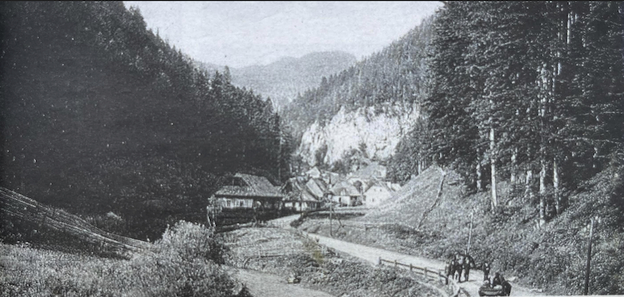Still in the first centuries of the Middle Ages, Europe was covered by dense forests. The first more compact settlements were established by laborious logging, and it could take decades of logging before a town came to exist.
On the territory of what is now Slovakia, forests remained for much longer than in other parts of Europe, partially because of its location outside main European events and also the mountainous terrain.
Thus, it is no surprise that in this landscape of forests and mountains people engaged in activities such as logging and charcoal burning.
In the wilderness of the Low Tatras, several lumberjack hamlets arose. However, their story was quite specific, to a certain degree. They lay in the hinterland of a big mining city, Banská Bystrica, and their founding can be connected with its activity.
Sometime between 1401 and 1550, the metallurgical town Jelenec appeared. The staff of the local iron mill were also the inhabitants of Jelenec. We know, thanks to historical records, that an ironworks bailiff used to live here, smelters, loggers and charcoal burners who secured the charcoal for the ironworks.
The iron mill later ceased to exist, and the direct successor of Jelenec became, with all probability, the hamlet of Dolný Jelenec which we can see in this period postcard dating back approximately to the 1900s. In the course of the 17th century, more lumberjack settlements came to exist in the nearby valleys: Horný Jelenec, Rybie, Prašnica, Haliar, and one century later also Valentová and Bachlačka. Along these hamlets, an ancient road led across the mountains to the region of Liptov; there are almost no traces left of it today.
In this picturesque postcard, we can see – under the Hungarian name Alsó Szarvas (i.e. Dolný Jelenec) – also Zólyomvármegye/Zvolenská župa, or Zvolen Region.
This article was originally published by The Slovak Spectator on April 14, 2015. It has been updated to be relevant today.

 Postcard of Dolný Jelenec.
Postcard of Dolný Jelenec.